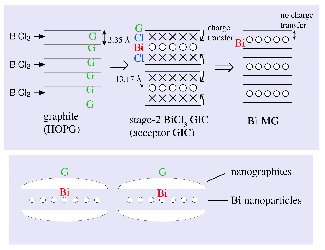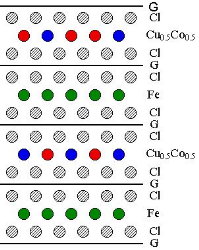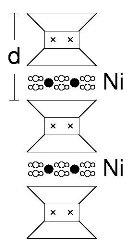
Masatsugu Suzuki
Office: S2-157A
Phone: 607-777-4320
E-mail: suzuki@binghamton.edu
 Picture on the right:
Professor M. Suzuki (left) and Dr. Itsuko S. Suzuki (right) using their
SQUID magnetometer.
Picture on the right:
Professor M. Suzuki (left) and Dr. Itsuko S. Suzuki (right) using their
SQUID magnetometer.
Education
- 1973-1977 PhD, Physics, University of Tokyo, Japan
- 1971-1973 MS, Electrical Engineering, Yokohama National University,
Japan
- 1967-1971 BS, Electrical Engineering, Yokohama National University,
Japan
Experience
- 1997-present Full Professor, Department of Physics, SUNY at
Binghamton
- 1991-1997 Associate Professor, Department of Physics, SUNY at
Binghamton
- 1991 Visiting Professor, Institute of Molecular Science, Okazaki,
Japan
- 1986-1991 Assistant Professor, Department of Physics, SUNY at
Binghamton
- 1985-1986 Visiting Scientist, Schlumberger-Doll Research,
Ridgefield, Connecticut
- 1984-1985 Visiting Scientist, Department of Physics, University of
Illinois at Urbana-Champaign, Urbana, Illinois
- 1977-1984 Research Associate, Department of Physics, Ochanomizu
University, Tokyo, Japan
Research Interest
There have been various important theoretical studies for two
dimensional (2D) systems over the years. Only in recent years has a wide
variety of 2D systems become available for detailed experimental study
so that the relevance of various theoretical ideas could be assessed.
Graphite intercalation compounds (GIC’s) form a class of materials whose
dimensionality can be systematically controlled by its stage number
(the number of graphite layers between adjacent intercalate layers). The
research interest on the influence of dimensionality has naturally
centered around GIC's. Considerably improved understanding of these
compounds has led to more and more use of GIC's as a testing ground for
physical phenomena in low dimensional systems, including the area of
crossover physics from 3D to 2D behavior.
We have been doing our research on the magnetic properties of
magnetic ternary GIC’s such as random-mixture GIC’s (RMGIC’s) and
graphite bi-intercalation compounds (GBIC’s) at the Department of
Physics, SUNY-Binghamton since 1986. The magnetic random mixture
graphite intercalation compounds (RMGIC’s) are novel types of GIC's,
where the intercalate layer is formed of a random mixture of two kinds
of intercalants. The magnetic graphite bi-intercalation compounds
(GBIC’s) offer possibilities for the formation of superlattices such as
two different magnetic intercalate layers separated by a single graphite
layer. The GBIC has a stacking sequence of GI1GI2GI1GI2 along the
c-axis, where two different intercalate layers (I1 and I2) alternate
with a single graphite layer (G). Both magnetic RMGIC’s and GBIC’s
provide model systems for studying magnetic phase transitions arising
from various kinds of spin frustration effects: (i) spin glass and
reentrant ferromagnet (stage-2 CucCo1-cCl2 GIC's and CocCo1-cCl2-FeCl3 GBIC’s), (ii) random field effect, (iii) 2D percolation behavior, (iv)
2D Ising antiferromagnet on the triangular lattice (CuCl2 GIC, MnCl2 GIC), and so on.
We are also interested in (i) the magnetism and superconductivity in
layered systems metal-graphite (MG’s), and MxTa2S2C (M = Fe, Co, Ni,
Cu), (ii) the magnetism of vermiculite intercalation compounds (VIC’s),
(iii) the magnetism (superparamagnetism) of Fe3O4 nanoparticles and so
on.
The content of our research is as follows.
- Aging
dynamics of spin glass and reentrant ferromagnet in magnetic ternary
and quarternary graphite intercalation compounds: Stage-2 CucCo1-cCl2
GIC’s, CocCo1-cCl2-FeCl3 GBIC’s (.pdf, 456KB)
- Magnetic
phase transition of magnetic ternary graphite intercalation compounds
(review articles) (.pdf, 980KB)
- Magnetism
and superconductivity in metal graphites (MG’s): Bi-MG, Ta-MG, Pd-MG,
Rh-MG, Ru-MG, Sn-MG (.pdf, 368KB).
- Magnetism
in vermiculite intercalation compounds (VIC’s): Ni-VIC, Co-VIC, rare
eatth metal-VIC’s (.pdf, 344KB)
- Superconductivity and magnetism in layered system Ta2S2C with
magnetic intercalates:Ta2S2C and MxTa2S2C (M = Fe, Co, Ni, Cu).
- Fermi surface effect in graphite intercalation compounds;
angular-dependent magnetoresistance oscillations (AMRO): high stage
MoCl5 GIC.
- Superspin galss Fe3O4 nanoparticles.and superparamagnet Fe3O4 @ Au
nanoparticles
- Spin frustration in two-dimensional antiferromagnets on the
triangular lattice (stage-2 MnCl2 GIC). Schematic diagram of the
sandwich structure (G-Bi-G) in Bi-MG. The c axis stacking sequence of
Cu0.5Co0.5Cl2-FeCl3 GBIC Schematic structure of Ni VIC composed of two
tetrahedral sheets and one octahedral sheet: Ni2+ (●) and Fe (x).



Schematic diagram of the sandwich structure
(G-Bi-G) in Bi-MG.
Experimental
techniques
Experimental
techniques (SQUID magnetometer) (.pdf, 2.5 MB) used for the study
on the aging dynamics in spin glass systems is summarized in the pdf
document.
Teaching
His teaching activities have centered around introducing the solid
state physics and quantum mechanics into the undergraduate and graduate
curriculum at SUNY-Binghamton. He has taught courses including solid
state physics, quantum mechanics, statistical thermodynamics,
electricity and magnetism, and laboratory courses.
The
complete list (.pdf, 12 KB) is given in the pdf document.
Lecture Note on Solid State Physics:
- X-ray
diffraction (.pdf, 1.3 MB)
- Free
electron Fermi gas model: specific heat and Pauli paramagnetism
(.pdf, KB)
- Bloch
Theorem and energy band (.pdf, 444 KB), (mathematica
(.nb, 208 KB))
- de
Haas van Alphen effect (.pdf, 2.1 MB),(mathematica
(.nb, 7.8 MB))
- Josephson
junction and DC SQUID (.pdf, 2.7 MB), (mathematica_5
(.nb, 7.3 MB)),(mathematica_6
(.nb, 4.4 MB)),(mathematica_9
(.nb, 896 KB)),(mathematica_13
(.nb, 1.3 MB))
- Mean-field
theory for ferromagnetism (.pdf, 228 KB)
- Ginzburg-
Landau Theory for superconductivity (.pdf, 1.4 MB)
- Spin
Hamiltonian of transition metal ions in crystal field (.pdf, 1.3
MB)
- Superexchange
interaction (.pdf, 2.7 MB)
- Lattice
Waves (.pdf, 536 KB), (mathematica_1
(.nb, 12 KB)),(mathematica_2
(.nb, 200 KB))
- AC Magnetic Susceptibility
(.pdf,
446 KB)
Lecture Note on Senior Laboratory
- Fraunhofer
diffraction and double-split experiment (.pdf, 616 KB), (Mathematica
(.nb, 4.8 MB))
- Measurement
of mutual inductance from frequency dependence of impedance of AC
coupled circuit using digital dual-phase lock-in amplifier, (.pdf,
768 KB)
-
Oscillations and
Waves (.pdf, 974 KB)
- Coupled Pendulum
(.pdf, 827 KB)
-
Spin echo method in pulsed nuclear
magnetic resonance (.pdf, 2.4MB)
-
Zeeman effect (.pdf,
531 KB)
-
Optical pumping (.pdf,
698 KB)
-
Faraday rotation (.pdf
361 KB)
Lecture Notes on
Computational Physics (Physics 468)>>click
here>>
Lecture Notes on Introductory Phys Course (Phys 131 and 132)>>click
here>>
Lecture Notes on Method of Theoretical Physics (Phys 474 and 514)>>click
here>>
Lecture Notes on Modern Physics (Phys 323)>>click
here>>
Lecture Notes on Quantum Mechanics I (Phys 421)>>click
here>>
Advanced Topics in Introductory Phys Course (Phys 131 and 132) :
- Physics
of simple pendulum; case study of nonlinear dynamics (.pdf, 3 MB)
- Physics on bar magnet (.pdf, 776
KB)
- Physics on rainbow (.pdf, 579
KB)
-
Radiation from electric dipole
moment (.pdf, 1.1 MB)
-
Minimum
deviation of angle in prism (.pdf, 669 KB)
Conference talks:
- Magnetic-field
induced superconductor-metal-insulator transitions in bismuth
metal-graphite (APS 2002) (.pdf, 1.2 MB)
- Aging,
rejuvenation, and memory effects in short-range Ising spin glass
Cu0.5Co0.5Cl2-FeCl3 GBIC (APS 2004) (.pdf, 980 KB)
- Aging
dynamics across a dynamic crossover line in three-dimensional
short-range Ising spin glass Cu0.5Co0.5Cl2-FeCl3 graphite
bi-intercalation compound (APS 2005) (.pdf, 400 KB)
- Memory
and aging effect in hierarchical spin orderings of stage-2 CoCl2
graphite intercalation compound (APS 2006) (.pdf, 648 KB)
- Magnetic
Ordering of CoCl2-GIC: a Spin Ceramic -Hierarchical Successive
Transitions and the Intermediate Glassy Phase- (Highly Frustrated
Magnetism 2006, Osaka, JAPAN August 15-19) (.pdf, 1.6 MB)
- Memory
interference in stage-2 CoCl2 graphite intercalation compound (APS
2007) (.pdf, 768 KB)
Research Supplement:
The purpose of this page is to provide additional resources for all
those who are interested in his research.
They are as listed below:
- Note on spin
hamiltonian of the Fe2+ and Co2+ spins (.pdf, 228 KB)
- Scaling
form for zero-field cooled and field-cooled susceptibility of
superparamagnet (.pdf, 420 KB)
- Note on
stretched exponential relaxation in spin glass phase by M. Suzuki and
I.S. Suzuki (.pdf, 116 KB)

 Picture on the right:
Professor M. Suzuki (left) and Dr. Itsuko S. Suzuki (right) using their
SQUID magnetometer.
Picture on the right:
Professor M. Suzuki (left) and Dr. Itsuko S. Suzuki (right) using their
SQUID magnetometer.

